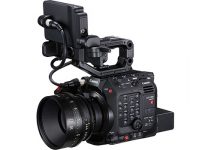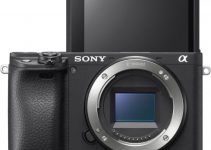Before RED released the eye-catching KOMODO 6K, they had the RAVEN shooting 4.5K in a compact form factor. When the RAVEN launched it promised the full RED experience yet in a smaller body, the KOMODO on the other hand is practically a brand-new thing for the company with an all-in-one design and streamlined operation.
Considering the potential market for the KOMODO includes current RAVEN owners, it’s interesting to see how the new camera compares to the old. In a multi-part series, filmmaker Peter Baerveldt of White Raven Productions takes a good hard look at the differences and shows off some great comparisons. You can also be sure that the differences go far beyond the simple resolution differences.
RED vs RED is a good challenge. It’s very nice to see how RED has changed over time. For this testing Baerveldt stuck with the RAVEN in R3D at 8:1 while the KOMODO was using R3D in LQ. It’s relatively equivalent.
Even before image quality we need to turn on the cameras and Baerveldt timed how long it took to boot up and do calibrations. The KOMODO dominates here, no doubt thanks to newer and faster tech under the hood.
It took 28 seconds to boot up and a calibration was 1 minute 52 seconds. Not too shabby. The RAVEN is sluggish in comparison at 39 seconds to boot up and 28 minutes 44 seconds to perform a calibration.
Compression is an interesting comparison. The RAVEN is essentially a full RED camera and offers REDRAW from 2:1 to 22:1 while the KOMODO went with the simplified HQ, MQ, and LQ options.
This may not seem like a big deal but the ability to turn compression up to save storage space is a very useful feature and the RAVEN excels here.
Also for first looks at image quality, you can immediately see the difference in resolution. The KOMODO’s 6K native resolution does offer more detail. That extra resolution doesn’t even seem to cost the KOMODO any quality.
Baerveldt was very surprised at how much the extra resolution helps. It doesn’t seem like a huge difference on paper but it can help a lot. Also, considering the size and cost of the KOMODO there were worries about quality, but he thinks it keeps the RED quality without issue.
One of the biggest differences with the KOMODO sensor compared to the RAVEN is that the KOMODO has a global shutter. To be frank, rolling shutter has been not a huge complaint on more modern cameras with readout speeds becoming faster and faster with every release.
Seeing the global shutter next to some RAVEN footage is really cool though. The global shutter is absolutely a benefit of the KOMODO and there are very few options with that on the market.
Now for the basic resolutions and frame rate specs. Going down the list the KOMODO offers 6K up to 40 fps, 5K up to 48 fps, 4K up to 60 fps, and 2K up to 120 fps. That is a great list of options that is very versatile. There are also options to shoot either ProRes or REDRAW.
The RAVEN actually has a great advantage here in that it offers R3D, ProRes, and proxies. That means you can shoot in R3D and a more convenient proxy file at the same time. RAVEN also has 120 fps in 4K while also offering more frame rate options for different speed options.
Baerveldt choose RED particularly for their great skin tones. And by this footage it looks like the KOMODO is near perfectly matched to the classic RED look. Not much to complain about here.
The KOMODO is really delivering incredible quality and options in a body that is so much smaller than existing RED cameras. RED created something wonderful here, even with the DSMC2 bodies delivering outstanding construction and modularity.
Now that’s all for part 1 so it’s time to move on to part 2. This next video dives deep into the image quality differences between the cameras.
This video starts off with dynamic range and exposure controls with the cameras. Having raw clearly benefits both well as there is excellent flexibility with under and overexposures. There really isn’t much more to talk about there, both are solid.
ISO performance gets interesting however as they have different qualities and traits for their noise. While the higher resolution of the KOMODO could be a disadvantage, it seems to actually exceed the performance of the RAVEN.
Both are good, but the KOMODO clearly edges it out when we look at the real-world tests. Also, the higher resolution allows the noise to look smaller and less obtrusive when put side-by-side on a 4K timeline. KOMODO wins on low-light easily.
As for slow motion, the RAVEN offers 4K up to 120 fps, so that puts it in the lead. The KOMODO has to drop down to a 2K crop to hit 120 fps.
Hard to deny the RAVEN is so much better here, it is better designed for the advanced frame rates and fast shooting rates than the new full-frame system. The KOMODO does have good range of settings, but the crop just kills it on quality and usability.
Buried deep in this video is the fact that RED went with a bold move in adopting the Canon RF mount on the KOMODO. It was definitely a smart move as adapters allow you to use EF glass, or any other glass you want for that matter.
The RAVEN has an EF mount, which is fine and has plenty of support but nothing special these days. Being able to use adapters on the RF mount also allows the use of advanced sensors, such as the one Canon makes with a built-in ND filter which makes life so much easier.
On to power! This is fairly simple. The RAVEN works with standard (and very large) V-mount batteries. These are great and last a long time and they usually have ports to power your accessories. Plus, if you have cinema cameras already you probably have a few.
The KOMODO’s smaller form factor doesn’t really have room for this and opts for Canon’s BP-9xx series batteries. This is actually great because it has two slots and you can hot swap one while the other keeps the camera running for effectively infinite runtime. You do lose the ports for running accessories off a single power source though.
Something that is only on the KOMODO is autofocus. This requires an electronic EF-to-RF adapter at the moment and looks promising. Baerveldt reports it is a bit hit or miss right now, but considering firmware updates are incoming it’ll likely get better over time.
As for controls, this is where the cameras are very different. The KOMODO relies on a touchscreen and doesn’t have many true buttons to work with or program.
This isn’t ideal but the system is very responsive. Overall the KOMODO is much more speedy than the RAVEN, which might make a bigger difference than having all the physical buttons you could ask for.
Both can be controlled by mobile apps as well. The KOMODO app offers quick pairing and tons of controls. It’s likely to be a commonly used in the field due to how easy it is.
The aging RAVEN app is a bit more obtuse and is improved upon ini nearly every way in the RED Control app for KOMODO.
I have to admit this video series was very rapid fire. Point after point was covered quickly and covered well. If you are curious about the KOMODO as a current RED owner or as a potential owner I’m pretty much convinced this camera is worth its asking price and then some. What’s your take on the KOMODO and how it compares to prior RED options?
[source: Peter Baerveldt]
Order Links:
- RED KOMODO 6K Cinema Camera (B&H)
- Canon Drop-In Filter Mount Adapter EF-EOS R with Variable ND Filter (B&H)
Disclaimer: As an Amazon Associate partner and participant in B&H and Adorama Affiliate programmes, we earn a small comission from each purchase made through the affiliate links listed above at no additional cost to you.



